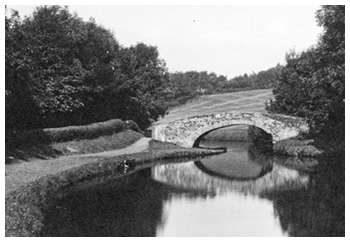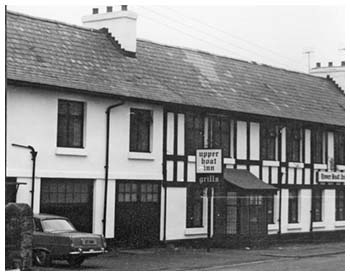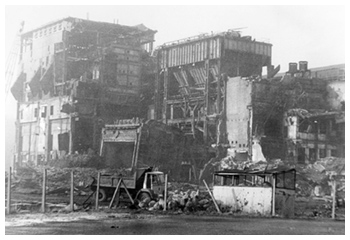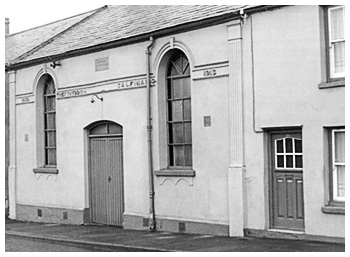
| Upper Boat | |
| Upper Boat is both the name of a public house and a locality situated three miles south of Pontypridd between the River Taff and the path once followed by the Glamorganshire Canal. The name Upper Boat refers to one of three boats used to ferry people across the Taff. One was stationed at Taffs Well ; another further up the river was at Willowford; and the 'upper boat' was moored near the Upper Boat Inn. Upper Boat had a small population of around 150 people according to the 1841 census. | |
 |
The canal was a source of employment providing work for boatmen, lock keepers and carpenters. Others worked in small local collieries such as Groeswen Colliery or Maes-Mawr Colliery located on the other side of the River Taff. The remainder worked in the Melin-gorwg iron foundry, the corn mill or as agricultural workers. The majority of the villagers' houses, known later as Williams Place, were built as terraces on either side of the Cardiff road. Carmel Welsh Calvinistic Methodist Chapel, built in 1839, was situated in the middle of the eastern terrace.
Left:The Glamorgan Canal near Upper Boat |
| Unlike Cilfynydd or Hopkinstown, no major colliery opened in Upper Boat's locality during the second half of the nineteenth century. Consequently, its population increased gradually and barely exceeded 300 by 1901. The Glamorganshire Canal and Melin-gorrwg foundry were both in decline. Despite the absence of a major colliery, the villagers were practically all employed in the mining industry.
|
 |
 |
As the twentieth progressed, Upper Boat village and its surroundings slowly began to witness changes. On April 30th 1902 the foundation stone of Upper Boat Power Station was laid. South Wales Electrical Power Distribution Company owned the power station, built on the western side of the River Taff. On the eastern side the Cardiff-Rhydyfelin line that skirted the village was built by the Cardiff Railway Company. The intention was to run it through to Pontypridd but due to opposition from other railway companies the scheme was abandoned. Left: Demolition of the old power station at Upper Boat December 1976 |
| However, Upper Boat's transformation was sealed in July 1936 when the site of the Treforest Industrial Estate was chosen and within twelve months, three factories were built employing sixty-nine people. As the estate expanded, fields to the south of the village and on the western side of the Taff quickly disappeared. Prefabricated houses were hastily built at Pont Pentre to house the influx of workers. The houses' lifetime however was relatively short.
Right: Carmel Welsh Calvinistic Methodist Chapel which closed in 1987 |
 |
| The construction of the A470 trunk road in the early 1970s resulted in their compulsory demolition. Upper Boat Power Station having closed in 1972 suffered a similar fate. It was demolished on December 14th 1976. Upper Boat hasn't witnessed significant residential development over recent years. Rather, the area is known for the large out of town supermarkets as well as the Griffin Mill garages that stand on the site of the old corn mill. | |